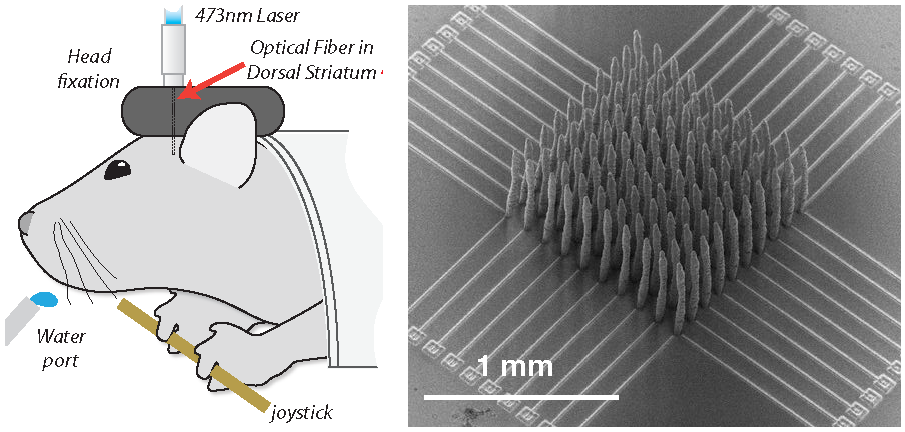
Dr. Eric Yttri
Associate Professor, Biological Sciences, Center for the Neural Basis of Cognition, and Biomedical Engineering
- Mellon Insistute 243
- 412 268 2782
Mellon Insistute 243
Carnegie Mellon University
4400 Fifth Avenue
Pittsburgh, PA 15213
Education
- Ph.D., Washington University in St Louis, 2011
- Postdoctoral Fellowship, Janelia Research Campus - HHMI
Bio
Eric Yttri seeks to understand how the motor and reinforcement areas of the brain work together to learn and generate goal-directed behavior (Yttri and Dudman, Nature 2016). He uses novel electrophysiological (hundreds to thousands of channel electrodes), behavioral (reaching and locomotion), and computational (state space, modeling) tools to understand the flow of information from thought to action. Ultimately he aims to delineate a specific role for each individual cell type in the motor system and leverage these findings into new deep brain stimulation strategies for conditions such as Parkinson’s disease.
Yttri won the DSF Charitable Foundation New Innovator award in 2017 has been an invited speaker at several conferences. He was selected to be chair of a Society for Neuroscience mini-symposium on basal ganglia function. He has also secured two patents for new electrodes which will be able to record from thousands of sites across hippocampus, motor and sensory cortex simultaneously.
Research
The Yttri lab interrogates the functional interactions of the motor circuit (motor cortex, basal ganglia, midbrain dopamine nuclei) that lead to skilled behavior. Our research approach is inclusive yet specific: interrogating the functional interactions between areas in a manner more typical of cognitive neuroscience (e.g. fMRI) while also identifying the computational contributions of individual cell types within each region. We combine a diverse set of tools to determine the neural mechanisms of motor behavior and movement diseases: Behavioral (reaching task in a mouse, quantitative open-field locomotion, Parkinson’s disease models)Physiological (50, 100 and 1000 channel electrodes, blue and red shifted channel rhodopsins, closed-loop stimulation, and Computational (dynamical systems analyses of neural population activity and machine learning-based categorization of behavior). These methods allow us sample and manipulate the neural activity of multiple areas simultaneous in our effort to understand the mechanisms of motor behavior and movement diseases
Research Interests: neurophysiology; circuit dynamics; computational neuroscience; motor control; reinforcement learning; tool development

Awards and Recognition
-
Chair, Society for Neuroscience Minisymposium of the basal ganglia, 2018
-
DSF Charitable Foundation Award - Massive Microelectrode Array Project, 2018